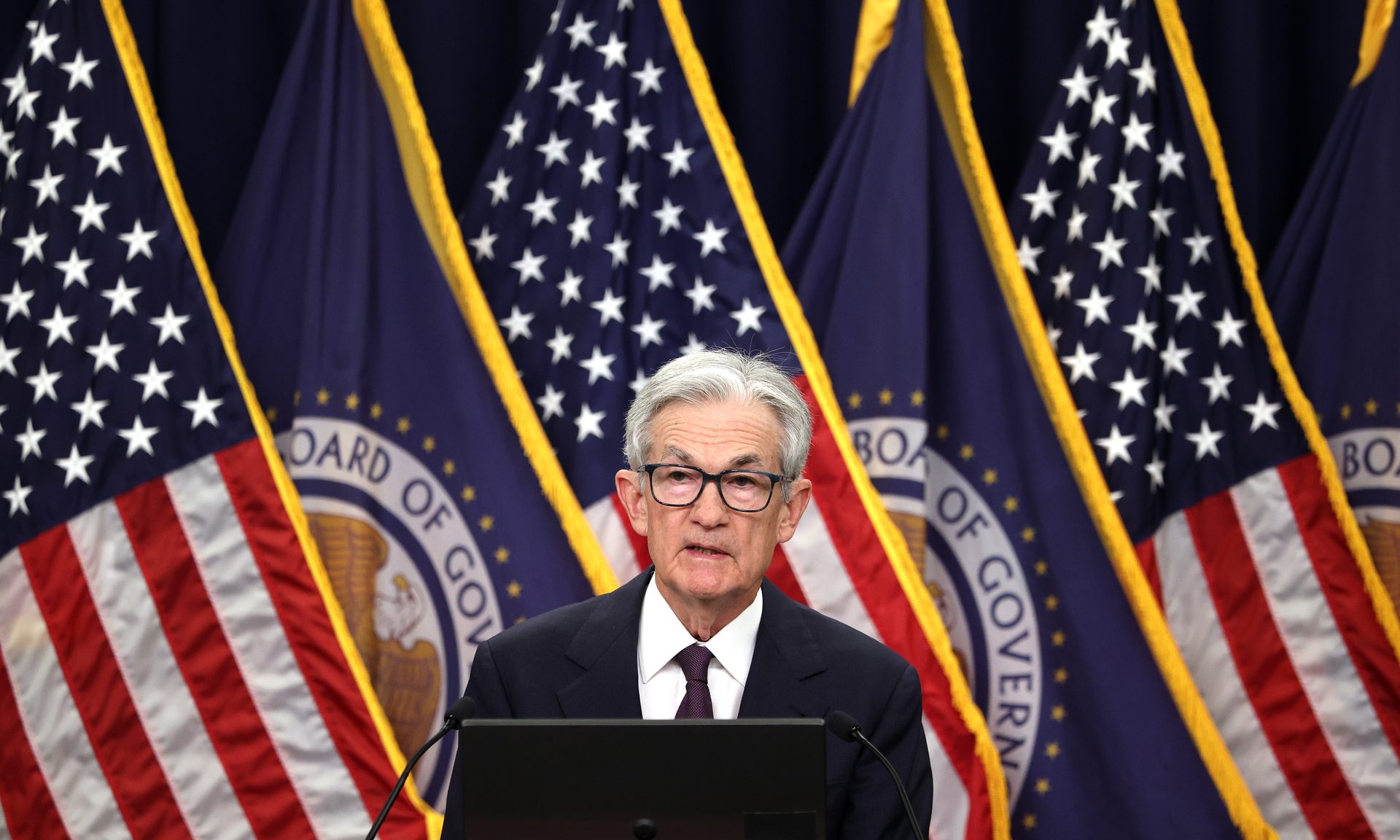Fed Rate Trimmed: What Does It Mean For You?
The federal funds rate is now 4%-4.25%. Further 2025 cuts are likely.

Many, or all, of the products featured on this page are from our advertising partners who compensate us when you take certain actions on our website or click to take an action on their website. However, this does not influence our evaluations. Our opinions are our own. Here is a list of our partners and here's how we make money.
For the first time in 2025, the Fed has cut rates. That means two things for consumers: Borrowing will get cheaper, but savings returns won’t be as high. It will take time for either effect to take hold.
On Wednesday, the Federal Open Market Committee (FOMC) cut the federal funds rate by 25 basis points, as expected, bringing the federal funds rate range to 4.00%-4.25%. The Fed last cut rates at its December 2024 meeting, following cuts at its two previous meetings. Throughout 2025, the federal funds rate has stood at 4.25%-4.50%.
Why cut rates now?
Fed Chair Jerome Powell called the trim a “risk-management cut,” in a press conference following the decision. When asked if a cut should have come sooner, Powell said, "We have to live life looking through the windshield rather than the rear-view mirror.”
For months, President Donald Trump has been pressuring the central bank to slash rates, but the Fed has firmly stated it bases its decisions on data and the broader economy. There are a few crucial elements that led to the rate cut, namely a steadily weakening labor market.
The FOMC indicated that cutting rates to cushion the labor market is a higher priority than tamping down lingering inflation, even with additional inflationary pressures looming. NerdWallet’s Senior Economist Elizabeth Renter says, “Rates are typically cut when the labor market is slowing, so this isn’t a sign of a strong economy, rather an attempt to ensure labor market cooling doesn’t worsen.”
Powell noted that the recent rises in prices are starting to put pressure on inflation, but the effects are limited thus far. He expects inflation to continue building. He also said that the labor market dynamics are largely being shaped by a shrinking labor force, largely due to current immigration policies combined with a sharp drop in labor demand. Current conditions are what Powell calls a “curious balance.”
“Typically when we say things are in balance, that sounds good, but in this case, the balance is because both supply and demand have come down quite sharply,” said Powell. “Now, demand is coming down a little more sharply because we now see the unemployment rate edging up.”
New FOMC member breaks ranks
There was one dissenting member of the FOMC — its newest member, Stephen Miran, who favored a 50 basis point cut. Miran, who was appointed on Monday, is taking an unpaid leave of absence from his position as chair of the White House Council of Economic Advisors so that he can serve on the Fed.
Renter says, "Though dissent at the FOMC isn’t unheard of, it is unusual, especially in recent history. But current economic conditions — and thus the proper course of action — are difficult to interpret, even without added political pressure. In other words, this FOMC at this point in time is ripe for some disagreements.”
What happens when there’s a rate cut?
A federal rate cut doesn’t automatically or immediately mean lower interest rates on financial products. Here’s what you may expect to happen:
It’ll be cheaper to borrow. When the Fed lowers the federal funds rate, banks will pay less to borrow from each other. The banks respond by lowering interest rates on loans. That includes credit cards, auto loans, mortgages, personal loans and more.
It’ll be cheaper to refinance. Lenders may trim rates for those looking to refinance an existing mortgage or other loan.
Saving will be less rewarding. Annual percentage yields will fall on common savings products like high-yield savings accounts, CDs and interest-bearing checking accounts.
Markets could fluctuate. Typically, cheaper borrowing tends to boost investor confidence and encourages businesses to expand, which leads to higher corporate profits. But if the rate cuts are perceived as a response to economic decline, then the markets could be more volatile. Immediately following the rate announcement, the markets fell, although the Dow’s slide was brief.
When it comes to consumer finances, Powell said, “Lower rates should support economic activity. I don't know that one rate cut will have a visible effect on that, but over time, a strong economy with a strong labor market is what we're aiming for.”
Will the Fed cut rates again?
It’s likely, but nothing is certain. Yes, that’s a vague answer, but it’s true.
Powell called all future decisions a “meeting-by-meeting situation.” He later added that the current situation is unusual since the economy isn’t what he would consider bad. He said, “It’s not incredibly obvious what to do.”
The FOMC dot plot indicates that more cuts are likely at its remaining meetings this year: Oct. 28-29 and Dec. 9-10. The futures market’s CME Fedwatch tool places strong odds of a rate cut at both meetings.
Meet MoneyNerd, your weekly news decoder
So much news. So little time. NerdWallet's new weekly newsletter makes sense of the headlines that affect your wallet.
Article sources
NerdWallet writers are subject matter authorities who use primary,
trustworthy sources to inform their work, including peer-reviewed
studies, government websites, academic research and interviews with
industry experts. All content is fact-checked for accuracy, timeliness
and relevance. You can learn more about NerdWallet's high
standards for journalism by reading our
editorial guidelines.

